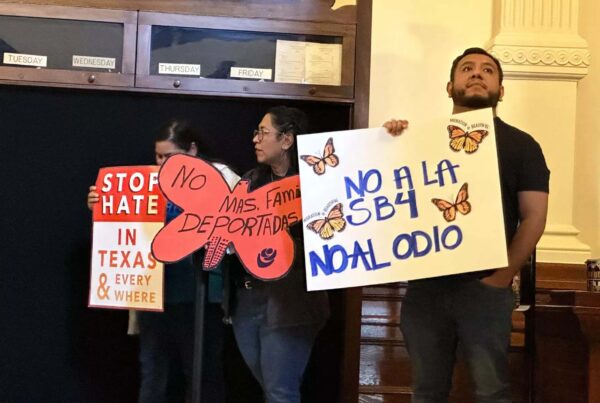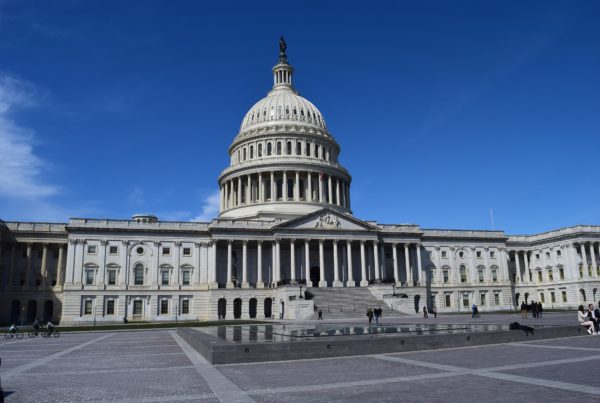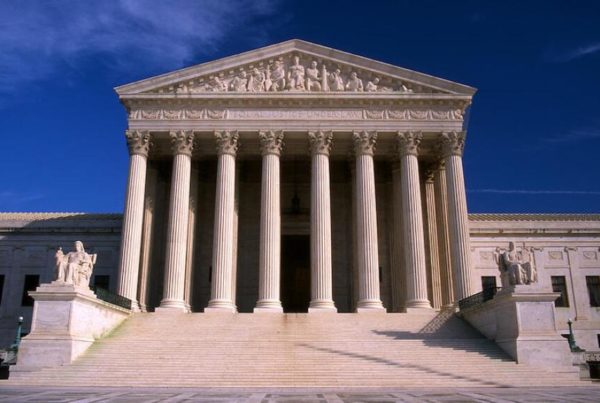Earlier this year, the Supreme Court sent down a ruling that effectively ends race-based affirmative action programs in the United States.
The decision in that case overturned two decades of precedent in college admissions and at the time sparked discussions about how it could impact the ability for universities to diversify their student bodies.
New research from the Brookings Institution gives us a peek at what college admissions might look like as schools adjust their policies to fit with current law.
Sarah Reber is a senior fellow at Brookings and authored the research. She joined Texas Standard to talk about what the high court’s decision means for college admissions. Listen to the interview above or read the transcript below.
This transcript has been edited lightly for clarity:
Texas Standard: So here in your research, you write about the end of affirmative action and that actually it is “unlikely that the ruling will have a significant effect on college enrollment of historically marginalized racial and ethnic groups overall.” Can you explain a little more about why that is?
Sarah Reber: So what we did is we collected data about which colleges said they considered race as a factor in admissions before the decision and the upshot of that analysis is that about a quarter of four year college students attend a college that used affirmative action in admissions prior to that decision. That number is lower, about 15% or so, for students from historically underrepresented racial groups.
The reason for this is pretty straightforward. Affirmative action was mainly used by highly selective colleges, and most students don’t go to highly selective colleges.
I see. So if I understand what you’re saying, it’s not so much that the policy change itself will not be as effective as perhaps people thought, but more that 85% of the folks who are going to institutions of higher learning are generally not doing so at a place where affirmative action would come into play. Is that fair?
Yeah, that’s right. So, you know, even beyond the four year college sector. So about a quarter of college students are in community colleges and another 40% or so attend four year colleges that have sort of open admissions or minimally selective admissions.
But I think it’s important that this isn’t to say that the decision won’t matter. I do expect to see declines in racial diversity at those highly selective colleges, including places like Harvard and UNC, who were part of the case and some broader set of institutions even than that, because of this decision. And I think it’s important to care about that, because we have research showing that students from disadvantaged backgrounds really benefit from attending an elite college.
So I think it matters who goes into those pipelines and who attends those, but it’s just that’s not where most students go. And so it’s easy to kind of overstate how broad the impact will be.
You know, the college admissions process here for public universities has been shaped in large part by the top 10% rule, which is if you’re in the top 10% of your graduating class in high school, you are automatically admitted to a Texas public university. Is this a model that other elite universities may look to to try and diversify their student bodies?
Yeah, so Texas is interesting because Texas has been through this before because in the 1990s, the Fifth Circuit, which includes Texas, prohibited the use of race in admissions at public universities. And at that time, Texas adopted, as you say, the 10% plan, which I believe now is more of a 6% plan.
I think that’s right.
But, you know, under these types of plans… Other states – California, some other states – have used this kind of approach in the past where, you know, the idea is that if you admit students from a wide cross-section of public schools, which, by the way, are pretty segregated by race, then you can enroll a class that is more representative of the state. The research has shown that these 10% plans, they can help a little bit in terms of maintaining racial diversity, but not that much there. They just don’t turn out to be good substitutes for the race conscious affirmative action as part of a holistic admissions policy.
But I should say that the students who are enrolled at UT-Austin because of top percent plans, benefited from that. So they had higher wages after college. And so I think it’s a good policy, even if it doesn’t really do too much to achieve the racial diversity goals, but it is beneficial in other ways.















